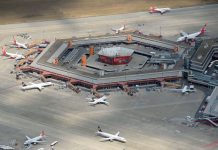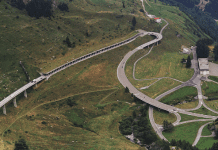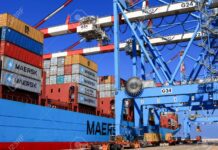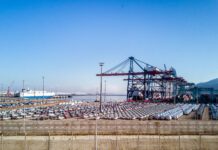Greenland’s mineral sector is being developed into a major industry to help increase economic development, jobs and an alternative industry from tourism and fishing. Its objective is to increase the level of mineral exploration to incentivise the mineral resources industry in order obtain exploration and exploitation licenses for the big investor European Business Magazine catches up with Julie Hollis (JH)Head of Geology Department who tells us what the Government of Greenland is up to.
Can you tell me how the government is going to go about this?
Greenland has continued to market the mineral potential in Greenland at various different international marketing events. In 2015 the Government of Greenland participated actively and was represented by a booth and presentations at Roundup in Vancouver, China Mining in Tianjin, Mines and Money in Hong Kong and London and PDAC in Toronto. Special events have taken place in Perth, Australia where the mineral potential and scientific activities were presented for the Western Australia mining industry. The mineral potential was also presented during a Greenlandic trade mission to Seoul, Republic of Korea. Greenland is well received by the mining industry but the Government also has to admit that the exploration and exploitation business have been influenced by the global recession in the last 2 to 3 yearsConcerning oil/gas promotion the Government has executed meeting events in London and Calgary to promote the coming licensing round. The upcoming licensing round is the onshore Disko and Nuussuaq 2016 licensing round with an application deadline of 15th December. It is possible to apply for maximum two out of three pre-defined blocks. Interested companies can request a free updated 2016 Disko and Nuussuaq GIS compilation for internal use by contacting the Ministry at: geology@nanoq.gl.
For more information regarding the upcoming 2016-2018 licensing rounds please read the latest Uulex edition and additional information at https://govmin.gl/petroleum/exploration-a-exploitation.
What measures been introduced to help provide exploitation licenses?
To help the exploration companies, those companies with licences in year 6 or beyond have had their expenditure commitments on those licences reduced to zero for 2015 and 2016. This means that companies that have already made significant investment commitments to exploration in Greenland, but who may be experiencing difficulty in generating funding, are able to continue to progress their projects in Greenland through this difficult period in the international market.The Geology Department has also worked on to improve the access to geological data on the web – see www.greenmin.gl– the Greenland Mineral Resource Portal. The Greenland Mineral Resources Portal is an entry point to all available information about mineral resources in Greenland. It gives mineral exploration companies, scientists and other interested parties access to data, reports, maps and scientific background information about the geology of Greenland.Concerning oil/gas the Greenland National Petroleum Data Repository (GNPDR) has been launched. Since June 2015, the Greenland National Petroleum Data Repository (GNPDR) portal has been online (www.greenpetrodata.gl). The GNPDR repository for Greenlandic oil and gas related geophysical and well data, which was previously managed by GEUS. The portal is administrated and maintained by the Ministry of Mineral Resources cooperative partner Common Data Access Limited (CDA), on behalf of the Government of Greenland. CDA and its subcontractor Schlumberger Software Integrated Solutions (SIS) have many years of experience in building and maintaining oil and gas related databases. CDA is responsible for one of the largest repositories of offshore oil and gas data in the United Kingdom. The Department of Geology at the Ministry, CDA and SIS have worked closely together to set up the criteria for the GNPDR. The new portal is intuitive and easily accessible after registering, which is free. Within the portal stakeholders can easily browse the site, choose and purchase data for wells or geophysical data using an extensive search function or a GIS-based map, providing an overview of all the available Greenlandic oil and gas related onshore and offshore data.
EBM -How far has the mining come in the last five years in terms of world-wide trends and what have been the most recent projects and exploitation license applications?
JH-Within the last five years exploitation licenses have been granted to: London Mining Greenland A/S – the Isua banded iron formation project now taken over by the General Nice Group from China. The decrease in iron ore prices has prevented the mining project from getting underway. True North Gems Greenland A/S is engaged in starting the first Greenland ruby and sapphire mine near Fiskenaesset, Qeqertarsuatsiaat, southeast of Nuuk. True North Gems Greenland A/S is a subsidiary to the Canadian True North Gems Inc. registered on the Toronto Stock Exchange. The ruby and pink sapphire mine and production plant at Aappaluttoq, southeast of Nuuk will employ approximately 50 people. The company is planning a production facility in Nuuk with approximately 20 employees, where Greenland rubies and pink sapphires will be cleaned and categorized. Hudson Resources Inc. has announced the commencement of field activities at its wholly-owned White Mountain anorthosite (calcium feldspar) project in Western Greenland. The Company recently commenced construction activities at the White Mountain project. Construction is focused on civil works in preparation for equipment delivery and process plant construction in the spring of 2017. Activities this year include drilling and blasting for the foundations for the process plant, fuel storage farm, maintenance shop and the 35,000 tonne product warehouse at the port. Hudson has also entered in to an agreement to purchase a barge which will be used as a floating wharf. The use of the barge, which is 28m wide by 92m long, will enable the port to be constructed in a timely manner, and will also reduce transportation costs for project equipment shipped to site. James Tuer, Hudson’s President stated: We are on track to meet our goal of delivering product in the second half of next year (2017) to one of the world’s leading fiberglass producer as part of our 10 year purchase agreement. We expect this year activities to be completed by October. Ironbark Zinc Limited is a leading ASX listed resources company focused on delivering shareholder value through the development of its major base metal Citronen mining operation in Greenland. The Company’s focus on the Citronen Project sees it very well placed to benefit from the forecast strengthening of the zinc market. The Citronen Zinc-Lead Project represents one of the world’s largest undeveloped zinc-lead resources with a resource in excess of 13 billion pounds of contained zinc and lead metal. The project is located in northern Greenland. To date in excess of 67,000m of diamond drilling has been completed at the Citronen Project. The mining exploitation application is under review and negotiation by the Government of Greenland. TANBREEZ is another company which are in dialogue with the Government concerning a mining permit. The TANBREEZ Project is located in South Greenland. The deposit is a multi-element world class deposit of rare earth elements (REE) which are rich in the heavy rare earths. It is one of the largest rare earth deposits in the world especially of the heavy rare earths such as dysprosium. The REEs are found in the mineral eudialyte which is a zirconium mineral, which includes ores of zirconium (zircon), tantalum (tantalite) and niobium (columbite). The deposit adjoins a natural, largely ice free harbour, which can take large ships. The project is close to some of Southern Greenland’s major towns and only some 38 km from a major international airport.
EBM-What are the major benefits to institutional/ international investors looking to invest in Greenland and mineral exploitation?
The Government of Greenland wishes to promote the prosperity and welfare of Greenlands society. One way of doing so is to create new income and employment opportunities in the area of mineral resources activiti es. These goals are implemented in the present strategy (period from 2014 to 2018), which are believed to be a major step in the right direction. The strategy initiatives will either contribute to achieving this level of activity or are based on the assumption that the level will be realised before the end of 2018.
The strategy points to the need to increase the efforts to ensure the best interaction possible between the mineral resources sector and other parts of our society (training, labour market, infrastructure and the health and social sectors). The Government of Greenland believes that it is important that all of us contribute to a sustainable development of the area of mineral resources activities. The strategy therefore also focuses on how to ensure that the opening of new mines will benefit our society the most in the form of new jobs and increased income. The development must be sustainable and must therefore take place with the greatest possible respect for our environment and nature and not least for all of us living in Greenland.The Government of Greenland is fully aware of the competition from other Greenfield areas in the world. The Government tries all the time to adjust the major benefits to institutional/ international investors, who are looking to invest in Greenland and mineral exploitation by following the fluctuations in the market and adjust the Mineral Act and taxation system based on benchmark analyses, so that Greenland is competitive internationally with similar regions of the world.
EBM – Over the next five years, what exciting new projects have Greenland got in in the pipeline for mineral exploitation and are there are any key projects?
In spite of the global recession there is still a great interest in Greenland’s mineral potential. The Government itself invests in basic geological studies such as mapping projects, zinc potential in Greenland, gemstone potential, resource assessments, and delivery of high quality geoscience data relevant to exploration. A couple of projects are very interesting for the coming years such as the multi-element project at Kvanefjeld in South Greenland and the nickel-cobalt-PGE project in the Maniitsoq area, SW Greenland.
Kvanefjeld
Greenland Minerals and Energy has been focused on delivering a world-class production center for specialty metals from the Ilimaussaq complex in south Greenland. Kvanefjeld is the first of several large-scale deposits to be delineated, and is widely recognized as one of the world’s largest resources of rare earth elements, as well as containing substantial resources of uranium and zinc. Managed by a first-class technical team, the feasibility studies on Kvanefjeld are now well-advanced, and Greenland Minerals and Energy is firmly placed to become one of the world’s largest and most cost-effective producers of specialty metals. The project overall resource inventory is 1.01 billion tonnes containing 593 million pounds U3O8, 11.14 million tonnes TREO, 2.25 Mt zinc TREO includes 0.37 Mt heavy REO, 0.84 Mt yttrium oxide. The Government of Greenland expects a mine application later this year or in 2017.
Maniitsoq
North American Nickel (NAN) has the Maniitsoq property in Greenland comprising numerous high-grade nickel-copper cobalt-platinum group metal occurrences associated with mafic to ultramafic intrusions of the Maniitsoq Norite Belt. This 75km-long belt is situated along, and near, the southwest coast of Greenland accessible from the existing Seqi deep water port with an all year round shipping season and abundant hydro-electric potential. The property is 100% owned by North American Nickel. During the period 2012 to 2014, over half of the diamond drilling carried out by NAN was completed at the Imiak Hill Complex to test three mineralized norite intrusions: Imiak Hill, Mikissoq and Spotty Hill. This work identified zones of disseminated to massive sulphides at all three locations including significant high grade intersections such as 18.6m of 4.31% Ni and 0.62% Cu in drill hole MQ-13-026 at Imiak Hill. In 2015, the Company implemented an $8.3M exploration program consisting of 5,655 m of diamond drilling in 30 holes, a 6,696 line km helicopter-borne geophysical survey, 61.7 line km of surface electromagnetic (EM) surveying, a gravity survey, a ground geology program and acquisition of state-of-the-art Worldview-3 satellite data across the entire property. The company has reached an important point in the exploration of the Maniitsoq property in that they have now identified multiple centres of significant Ni-Cu sulphide mineralization coupled with a better understanding of the geological setting as well as the nature of the mineralization and related geophysical responses. In addition, NAN is developing new regional and prospect scale targeting tools. The company is planning a large follow-up drilling program in 2016 and will also be continuing the systematic exploration of the Maniitsoq property. Other projects Apart from the two above mentioned projects, efforts from other exploration companies are investigating possible coming projects/mines in Greenland. A company (ARC) is working on reopening both the Nalunaq gold mine in South Greenland, and the Black Angel lead-zinc mine in central West Greenland. Other companies are investigating the potential for a variety of commodities such as graphite and titanium-vanadium, both as a solid rock deposit and a placer deposit. Gold, copper, rare earth elements and gemstones are also targets for the exploration companies in Greenland.
The company has reached an important point in the exploration of the Maniitsoq property in that they have now identified multiple centres of significant Ni-Cu sulphide mineralization coupled with a better understanding of the geological setting as well as the nature of the mineralization and related geophysical responses. In addition, NAN is developing new regional and prospect scale targeting tools. The company is planning a large follow-up drilling program in 2016 and will also be continuing the systematic exploration of the Maniitsoq property. Other projects Apart from the two above mentioned projects, efforts from other exploration companies are investigating possible coming projects/mines in Greenland. A company (ARC) is working on reopening both the Nalunaq gold mine in South Greenland, and the Black Angel lead-zinc mine in central West Greenland. Other companies are investigating the potential for a variety of commodities such as graphite and titanium-vanadium, both as a solid rock deposit and a placer deposit. Gold, copper, rare earth elements and gemstones are also targets for the exploration companies in Greenland.













































